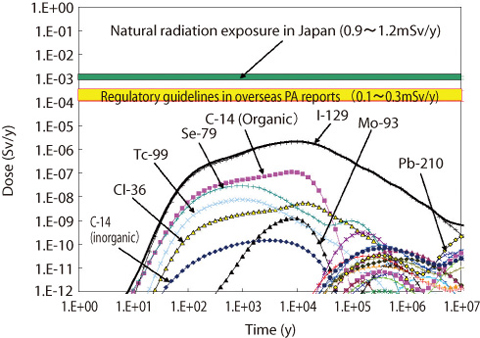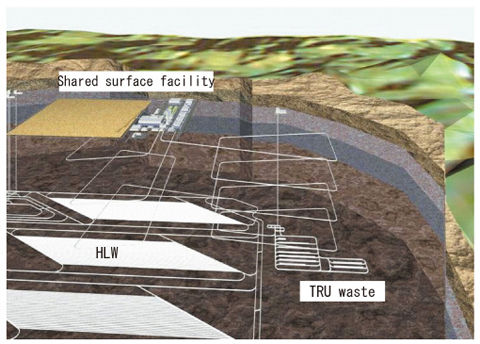
Fig.2-24 Estimated dose rate from a repository for TRU waste

Fig.2-25 A conceptual figure of co-disposal system composed of HLW and TRU waste repository
Low-level radioactive waste generated during operation and dismantling of reprocessing facilities and MOX fabrication plant is called Transuranium (TRU) radionuclides bearing waste (abbr. TRU waste) in Japan (TRU waste was recently named "long half-life low heat radioactive waste", but in this article, the term " TRU waste" is used). In order to establish a nuclear fuel cycle in Japan, a safe and feasible disposal methodology is required for TRU waste. To this end, Japan Nuclear Cycle Development Institute (in JNC, now JAEA) and the Federation of Electric Power Companies carried out an investigation of safe TRU waste disposal and summarized the results in a technical report called as the 2nd TRU progress report (hereafter TRU-2) 1). The contents of TRU-2 are:
(1) the latest information on waste and a prediction of new waste generation
(2) detailed plans for realization of disposal concepts and safety analyses that consider the geologic conditions of Japan
(3) predictions of safety of shallow and intermediate depth disposal
(4) alternative technologies for reducing uncertainties in performance assessment and in the geologic environment
(5) and items for future study
To carry out a detailed safety assessment geologic disposal, knowledge and data were acquired and organized with respect to long-term alteration of the buffer material (bentonite) and rock near the repository which contact with cementitious material. Similarly, the influence of nitrate, organisms, gas-generation, colloids, and microbes on the disposal system and radionuclides migration were also obtained and analyzed. These data allowed improved reliable assessment models and parameter settings.
The assessment showed that for a TRU waste disposal system in a Japanese representative geologic environment, the maximum dose rate occurs about 10,000 years after disposal and is 3 orders of magnitude lower than the Japanese natural dose rate (Fig.2-24)
For performance optimization of the geologic disposal system of radioactive waste, a safety assessment was carried out for a co-disposal system composed of TRU waste and high-level waste repositories (Fig.2-25). The result shows that a co-disposal is possible if these repositories are set at a certain distance apart because then reciprocal influences, e.g. nitrate, high-alkaline plume and organic matter from the TRU waste repository, and heat from the high level waste repository, can be avoided. The Atomic Energy Commission of Japan deliberated on the result and judged that the co-disposal concept described in the 2nd progress TRU report has technical feasibility.
The 2nd TRU progress report also provides a technical basis for systematic TRU waste disposal and safety regulations.
<Previous: 2-12 | Next: 3 Nuclear Fusion Research and Development >